User documentation is a vital component of customer support and product usability, as it helps mitigate common challenges users face, like navigating new software, understanding product functionalities, or troubleshooting issues.
User documentation examples in the form of step-by-step guides, FAQs, manuals, and video tutorials empower users to solve problems independently, which enhances their overall experience and satisfaction.
A study from Microsoft says that more than 90% of consumers expect brands to offer an online portal for self-service support, highlighting the growing preference for accessing information at one’s own pace and convenience.
In this blog, we will explore the types of user documentation and some examples from real brands. We will also discuss how user documentation software can help.
What Is User Documentation?
User documentation, or a user manual, is a comprehensive guide that helps you understand how to use a product or service. It includes step-by-step instructions, diagrams, FAQs, and other helpful information to help you navigate the product, from installation to troubleshooting errors.
A thoughtful, well-written user manual provides concise and accurate information on operating the product, reducing the chances of mistakes and frustration.
User documentation comes in various formats, such as printed manuals, online help guides, and video tutorials. It acts as your trusted companion, providing valuable insights to navigate the intricacies of a particular offering.
For example, consider a user manual for a digital camera. It usually includes detailed instructions on setting up the camera, from unboxing to configuring initial settings like battery installation and memory card insertion.
It explains basic operations, like turning the camera on and taking photos, and advanced features, like manual focus and exposure adjustments. Also, the manual offers troubleshooting tips for common problems, maintenance advice to keep the camera in good condition, and information on warranty and customer support.
What Is the Purpose of User Documentation?
User documentation provides detailed guidance and support on using a product or service. Here’s an elaboration on the essential purposes of user documentation:
Enables Efficient Product Usage
User documentation helps users understand and effectively use a product or service. It usually includes step-by-step instructions, usage scenarios, and explanatory diagrams that guide users through various processes, from basic setup and daily operations to more complicated functionalities.
By making the product easier to use, user documentation reduces the learning curve and frustration, especially for new users, increasing user engagement and satisfaction.
Reduces Customer Support Costs
By providing answers to common questions and solutions to frequent queries, user documentation can significantly reduce the number of support queries that reach customer service.
Users find it much faster and easier to refer to a manual or an FAQ section than to contact support. For businesses, this translates to fewer customer support interactions, cutting operational costs, and a more efficient allocation of support resources to more complex issues that require personal attention.
Improves Customer Satisfaction & Retention
High-quality user documentation leads to a better overall customer experience. It helps users quickly find helpful information that solves their problems and enhances their understanding of the product.
These satisfied customers are likelier to become loyal users, continue using the product, and recommend it to others. On top of that, well-written documentation reflects a company’s commitment to customer support and product quality, further boosting its reputation and customer loyalty.
Aids in Marketing & Sales
Comprehensive user documentation can also serve as a marketing tool; highlighting a product’s features, flexibility, and ease of use can be a strong selling point.
It reassures potential customers about the level of support they can expect. In fact, in some cases, documentation can help close sales by giving potential buyers the confidence that they will be able to maximize their investment in the product.
Ensures Compliance & Safety
In industries like electronics, pharmaceuticals, and manufacturing, providing documentation is helpful and a regulatory requirement.
User documentation ensures that users know the correct usage procedures and safety precautions, reducing the risk of accidents and misuse. This is crucial for user safety, compliance with legal standards, and avoiding liability issues.
Helps in Product Feedback & Improvement
User documentation can be a valuable source of feedback, helping businesses analyze which sections of the documentation users access most frequently and identify potential areas for product improvements.
Documentation can also include mechanisms for collecting user feedback, such as comments or ratings, which can provide direct insights into user needs and experiences.
What Are the Types of User Documentation?
As discussed above, user documentation is significant in providing the necessary information to understand and effectively use a product or service.
It comes in various forms, each serving a different purpose. Let’s quickly learn about each one of them.
1. User Manuals
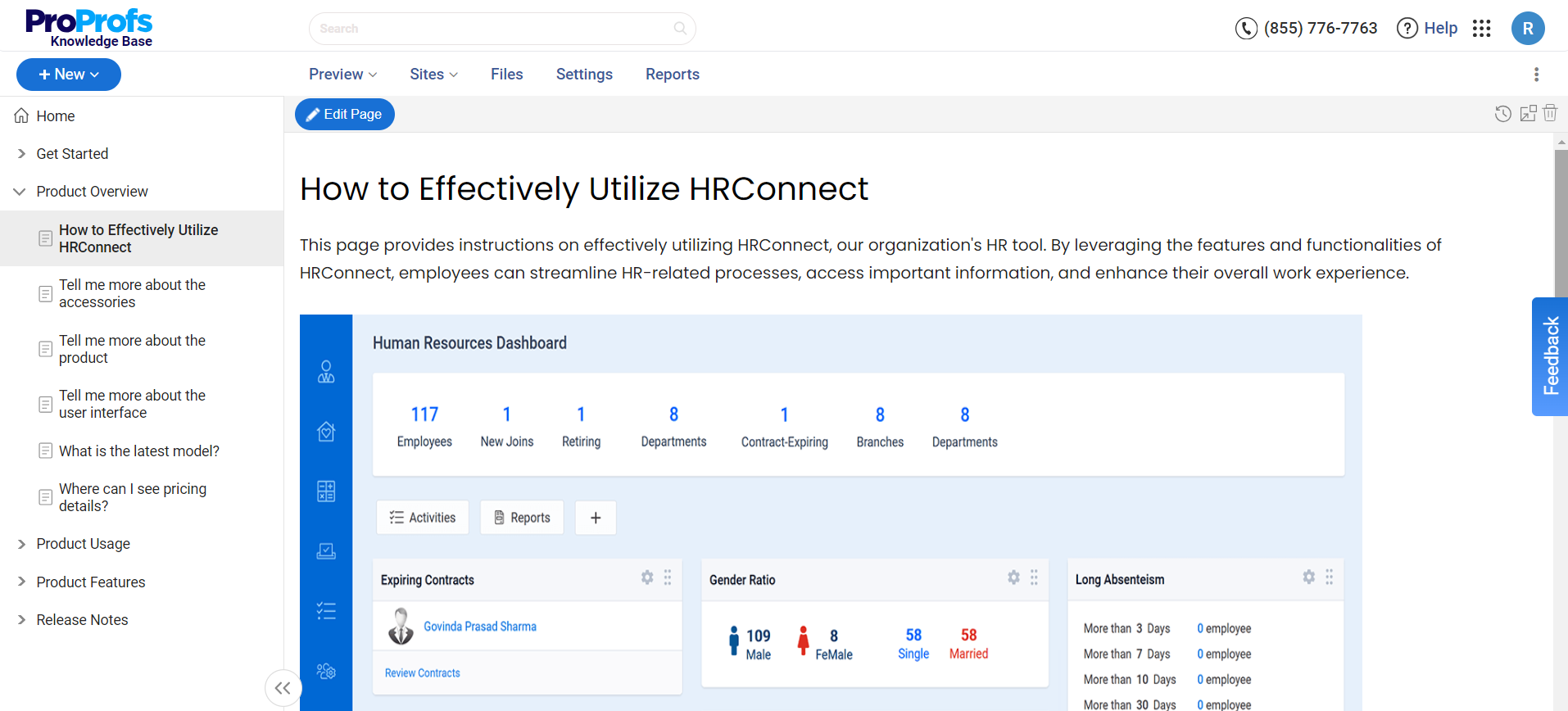
These comprehensive documents provide detailed information about all product or service aspects. They cover everything from basic operations to advanced features, usually in a structured format with an index for easy navigation.
These are crucial for helping users understand the full capabilities of a product and how to utilize them effectively.
2. Online Help Guides
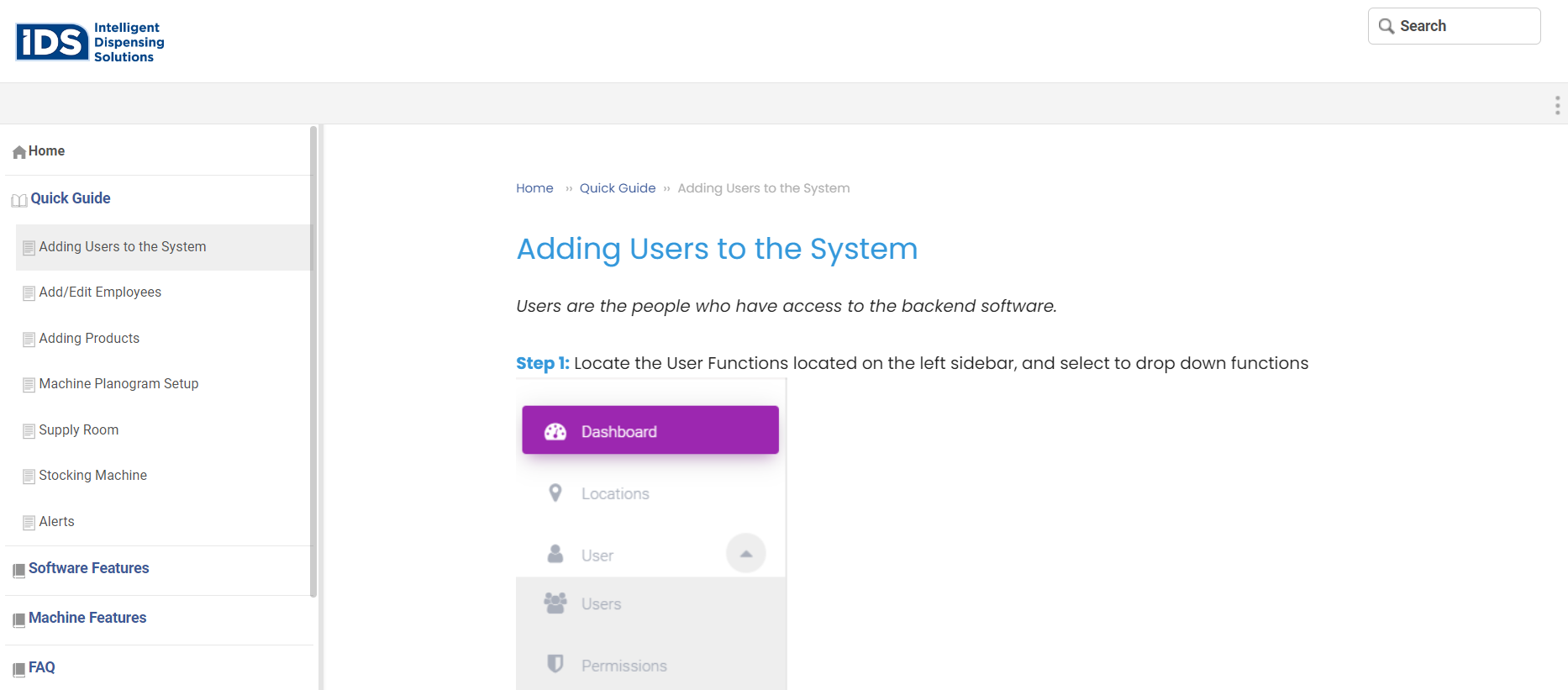
These guides are accessible directly through the internet or a product interface. They provide interactive and searchable assistance to users, often organized by topics or features.
These are beneficial for software applications where users might need quick help while using the product.
3. Video Tutorials
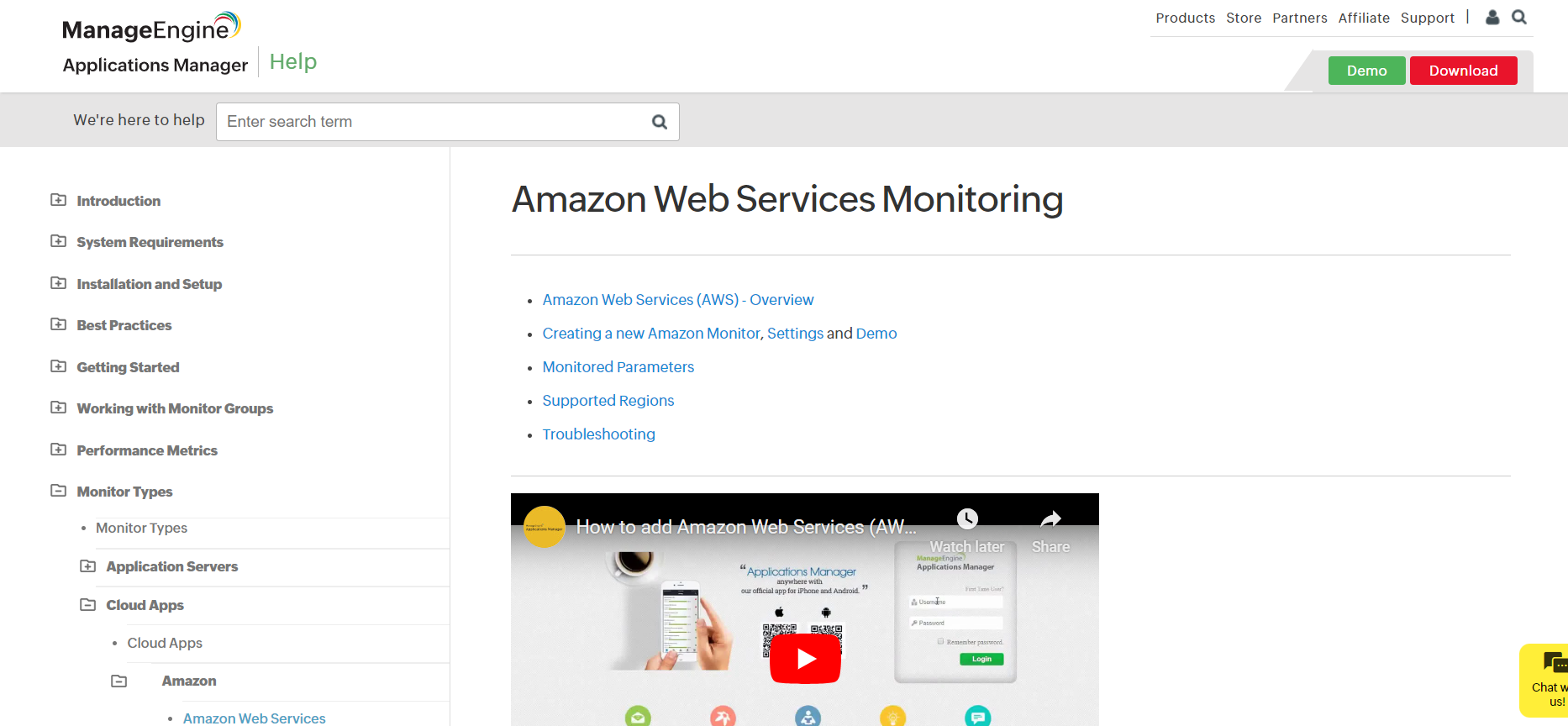
They offer visual and auditory explanations of using a product or performing specific tasks. They are effective for demonstrating complex processes or for users who are visual learners.
They engage users more effectively than text-based instructions and are often used with other documentation types.
4. FAQs

These address common concerns, problems, or queries users might have by serving as a quick reference guide. These aim to provide immediate answers to usual issues or questions, making them a crucial resource for reducing customer support workload.
5. Installation/Setup Guides
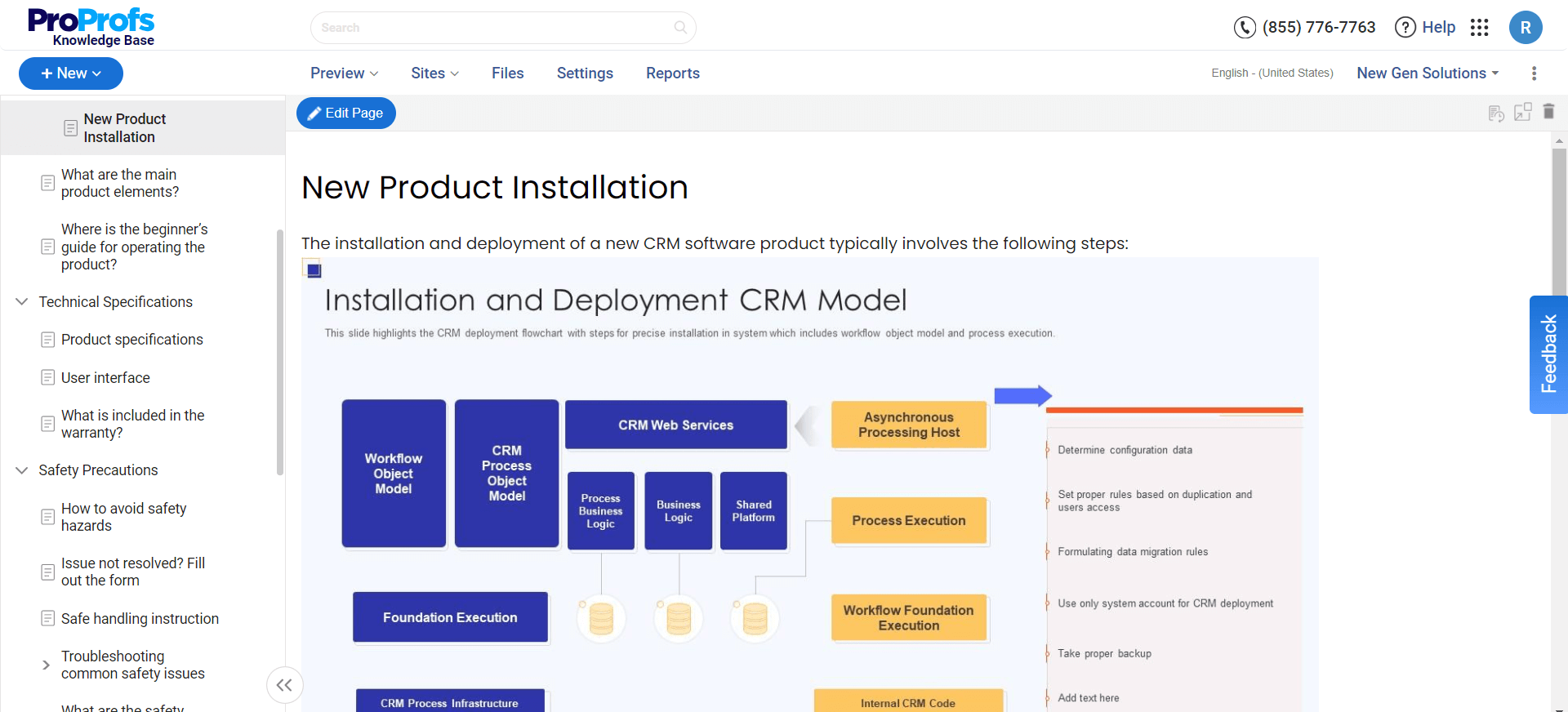
These guides provide specific instructions on installing or setting up a product. They help ensure users get a product up and running with minimal hassle. These usually include troubleshooting tips to help users resolve common issues that might arise during the installation process.
6. Product Manuals
These are similar to user manuals but often focus more on the product’s specifications, maintenance, and care than just how to use it. These manuals may include detailed technical information, safety warnings, warranty information, and manufacturer contact information.
7. Release Notes
These accompany new product versions and detail the updates, bug fixes, and new features included in the release. They are vital for users who must stay informed about the product’s evolution and those managing software updates in a professional environment.
8. Troubleshooting Resources
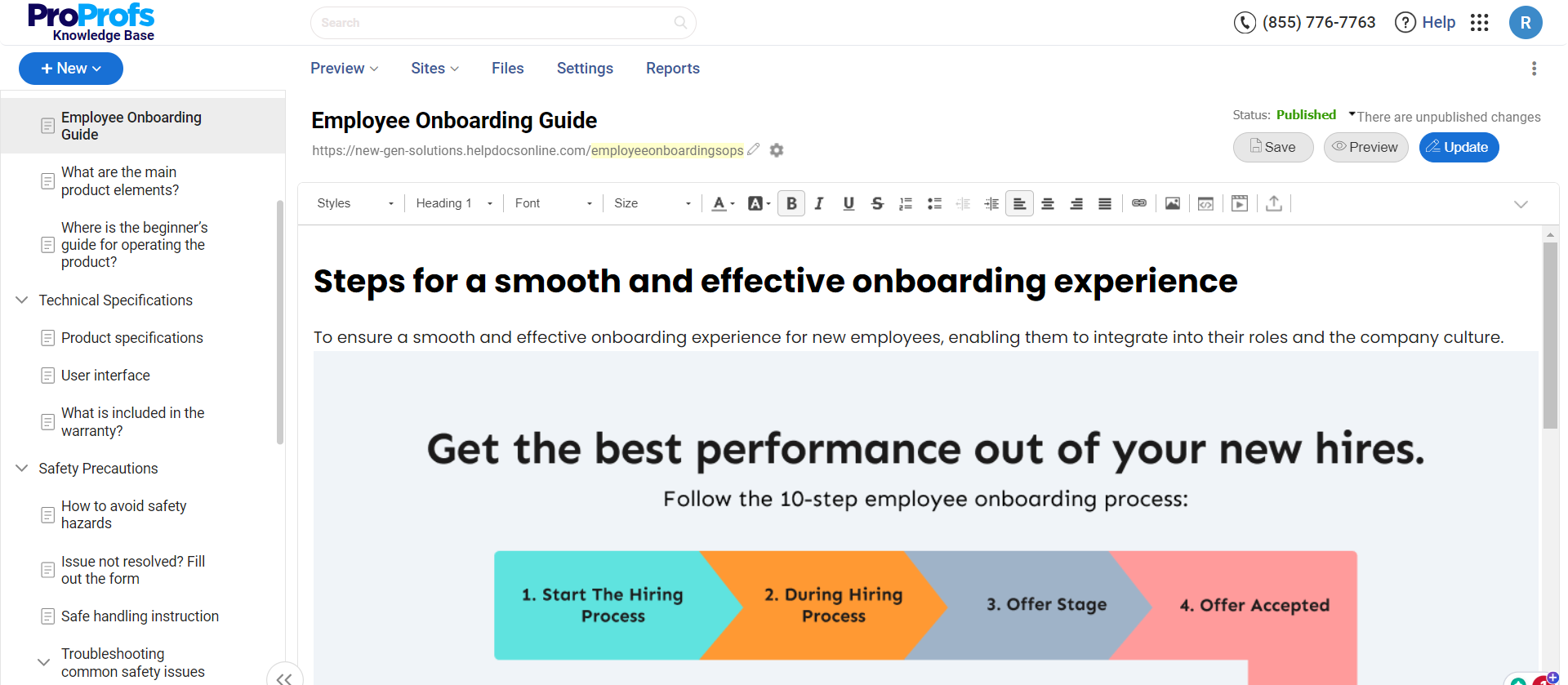
These resources help users diagnose and resolve problems they encounter with a product. These could include step-by-step troubleshooting guides, diagnostic tools, and tips on common errors and their solutions.
9. Quick Start Guides
These guides provide a concise overview of how to start using a product immediately. They convey the essential actions necessary to get started, which is ideal for users who prefer to dive in directly without going through detailed manuals.
These guides are handy for relatively simple products or providing an initial introduction before more in-depth use.
10. Knowledge Base Help Centers
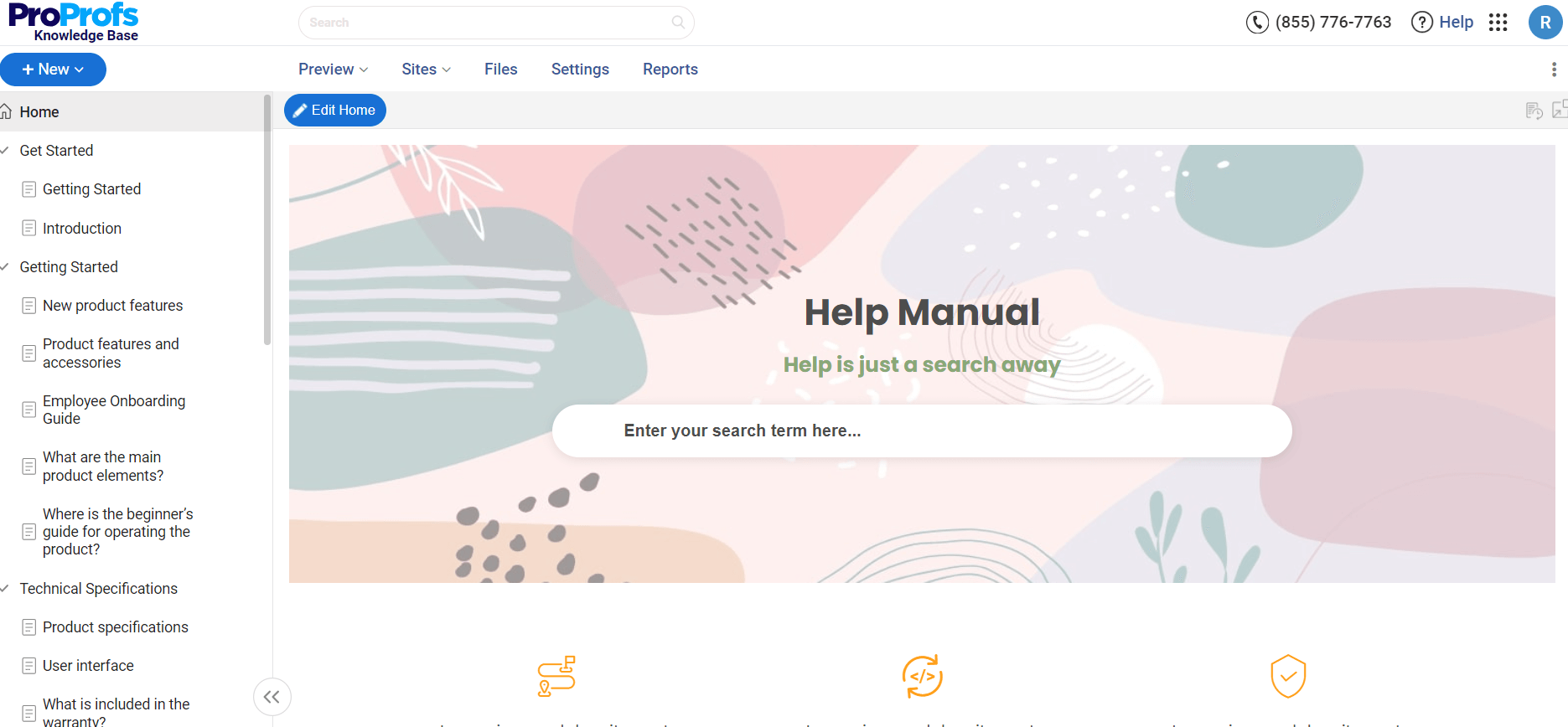
These are extensive repositories of articles, how-to guides, and resources about a product or service. They are usually searchable and categorized to help users find information quickly.
A knowledge base can be an invaluable self-service tool, allowing users to solve problems and learn about a product at their own pace.
Top User Documentation Examples
Now that we’ve discussed the basics of user documentation, it’s time to see it in action.
In this section, we’ll look at 12 stunning user manuals, user documentation, and user guide examples that will inspire and guide you to create something similar for your customers.
1. Manage Engine
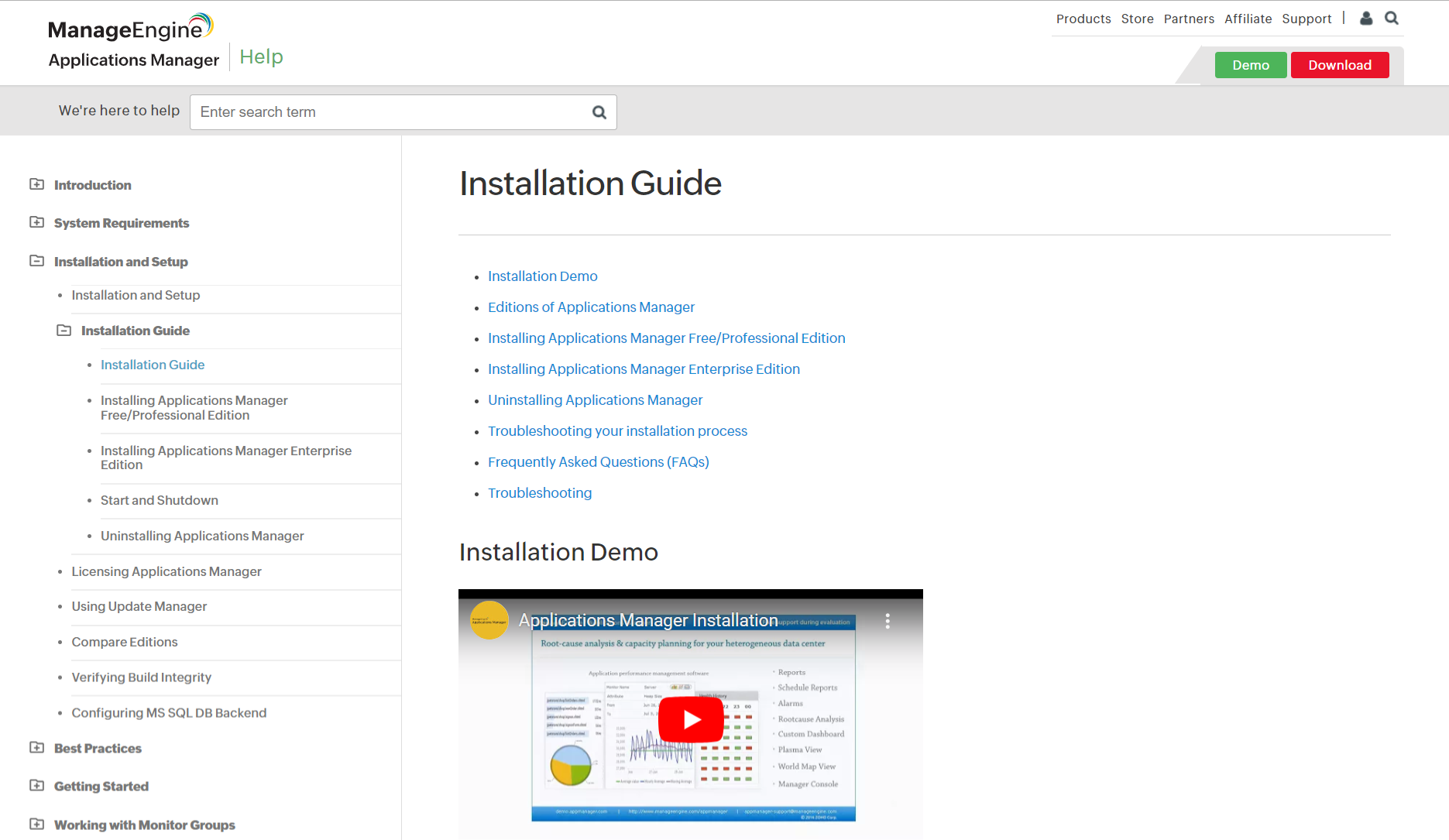
ManageEngine adopts a highly structured and informative writing approach, catering effectively to its technical audience. The page is organized into clearly defined sections, starting with prerequisites and detailed step-by-step installation instructions for various operating systems.
Each section has precise, bullet-pointed information and links to additional resources and demo videos, enhancing understanding and accessibility. This ensures that users can follow along easily and find specific information quickly, making the installation process straightforward and user-friendly.
2. CDS Convert
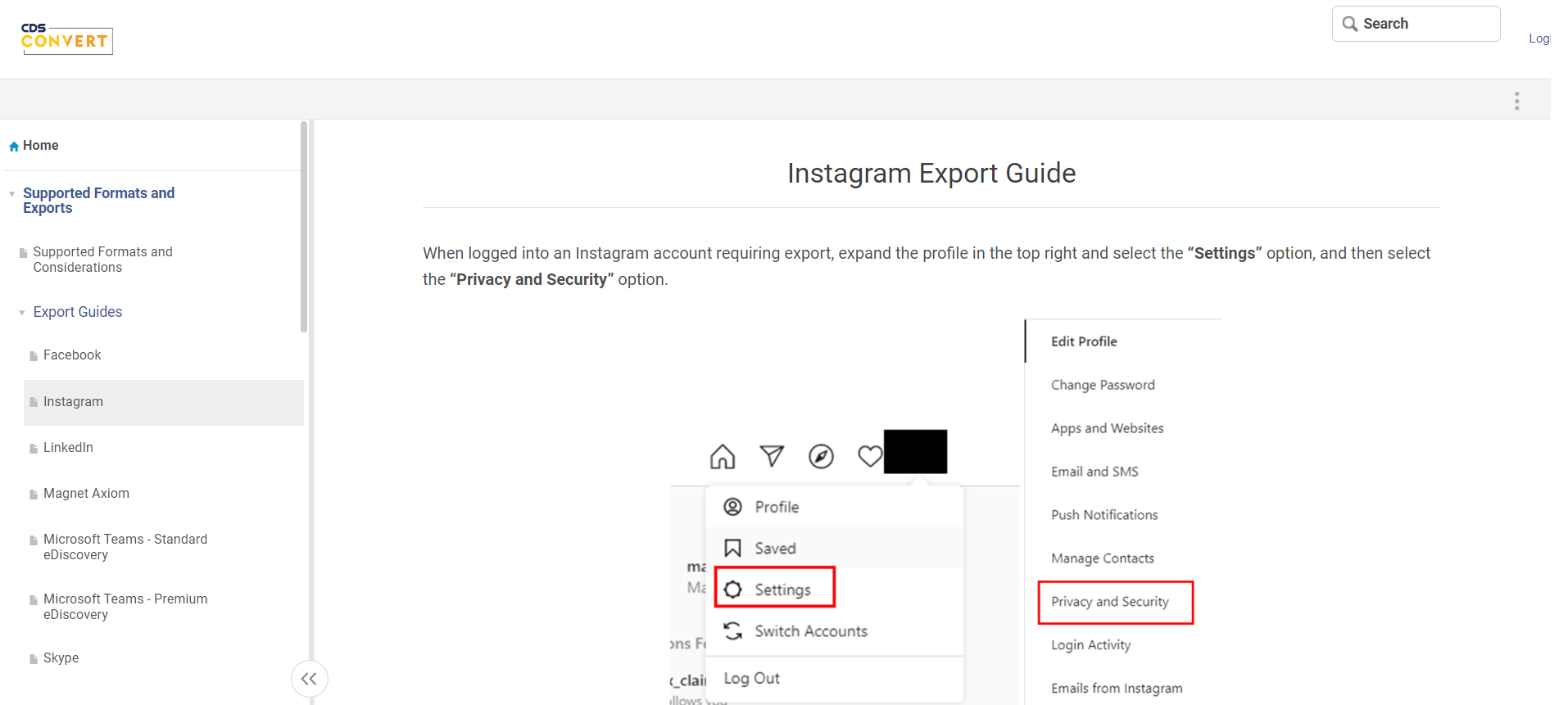
CDS Convert features a simple and concise writing style, targeting users who need quick, clear instructions. The minimalistic documentation focuses primarily on step-by-step guidance broken down into numbered steps, simplifying the user process.
This approach is complemented by direct language and the inclusion of crucial tips and cautions, ensuring users are aware of critical considerations before proceeding. Using relevant screenshots alongside each step enhances visual understanding and aids in executing the tasks accurately.
3. Riscure
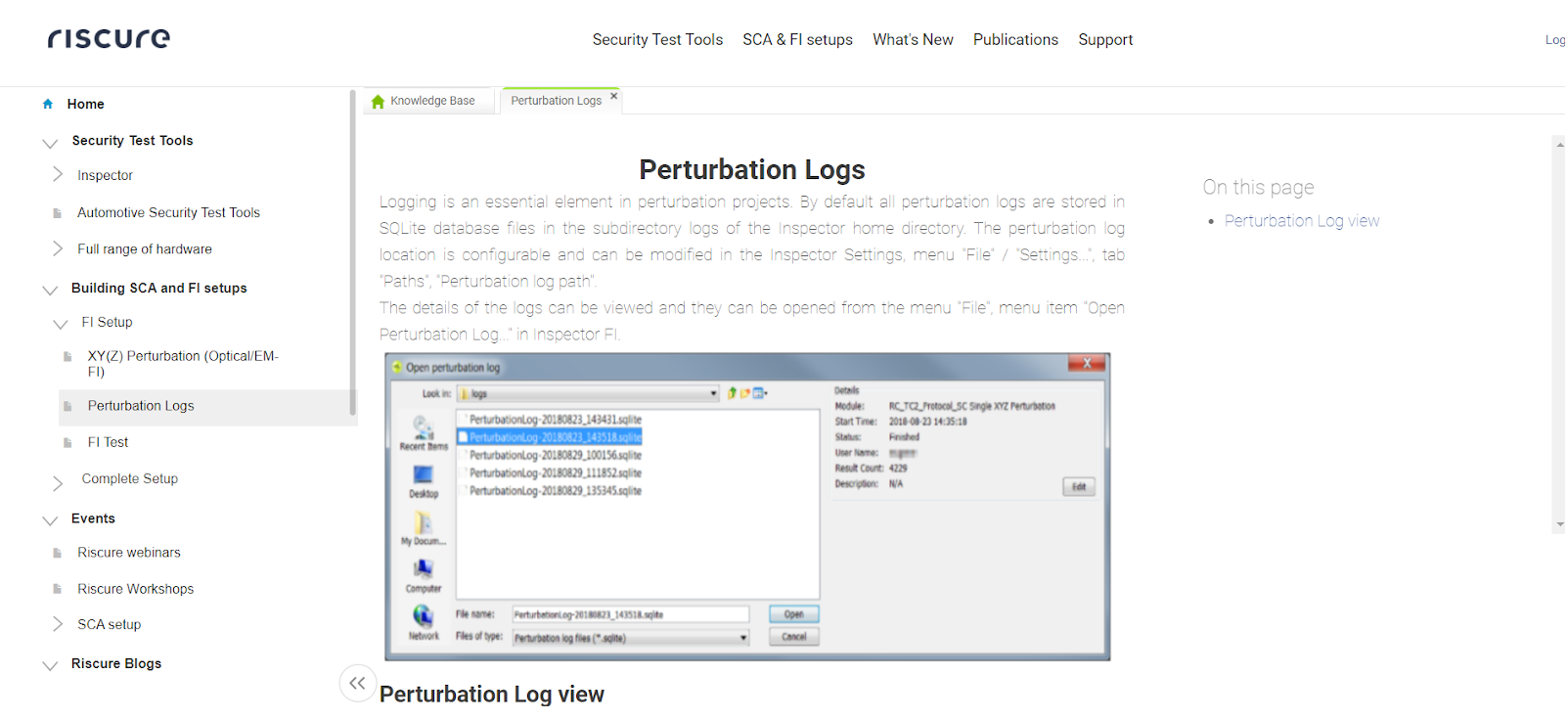
Riscure adopts a detailed and technical writing style for a specialized audience familiar with security testing concepts. The page is well-organized, with content divided into specific sections that include an overview, detailed descriptions, and step-by-step procedures for using perturbation logs.
Each section uses clear, concise language with technical precision, ensuring the information is accessible and comprehensive. The format supports easy navigation with clear headings, bullet points for crucial information, and occasional links to related topics, enhancing the reader’s ability to quickly locate and understand complex information pertinent to security testing techniques.
4. Ahrefs
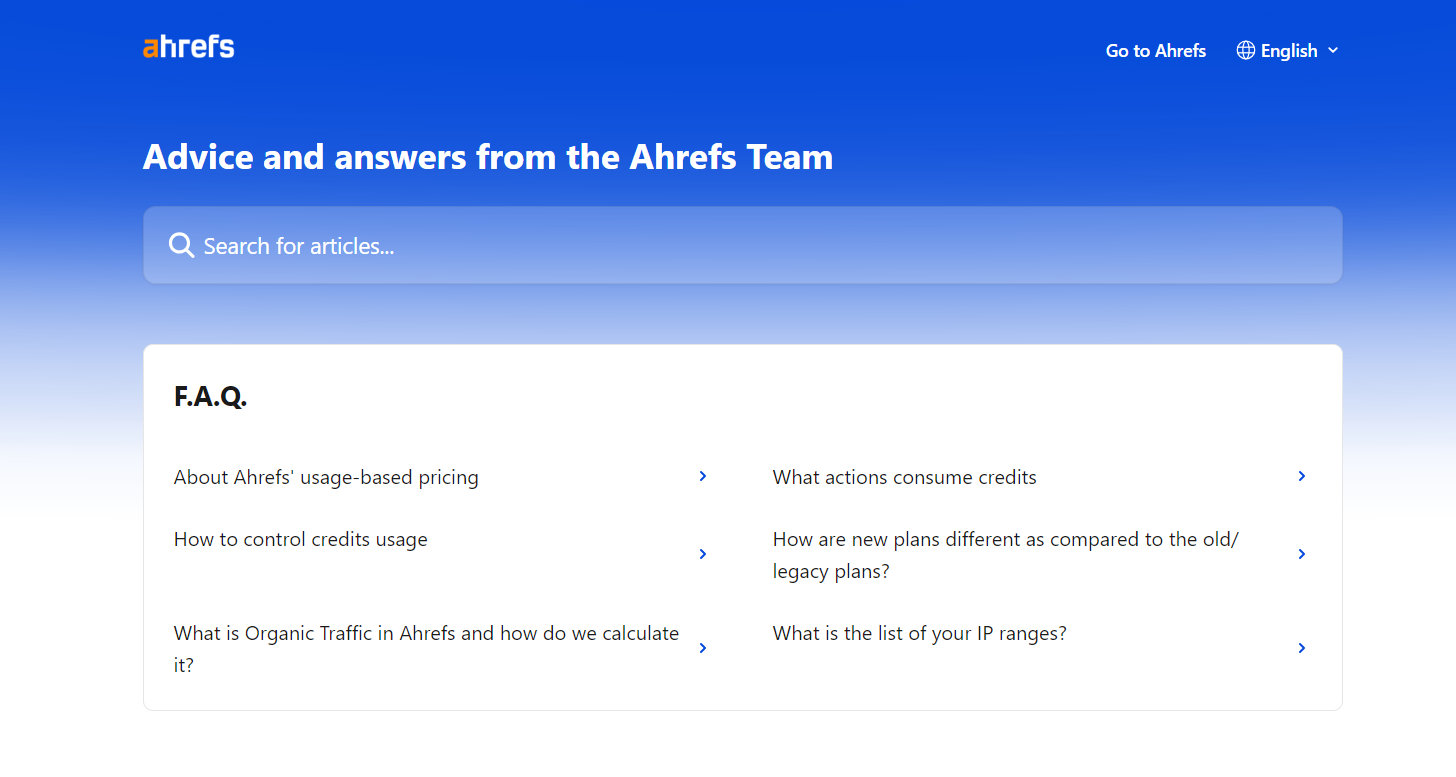
Ahrefs, the SEO expert, provides comprehensive user documentation as part of its product offering. Its help center has a prominent search bar at the center of the page, inviting you to start searching for content.
Below the search bar is a list of categories, starting with a Getting Started guide to help new users get up and running quickly. The best part is that the search bar sticks to the top even if you scroll down, allowing you to search for content anytime.
Ahrefs focuses on a simple interface that doesn’t show any categories apart from the breadcrumbs at the top of the article.
5. Microsoft Docs
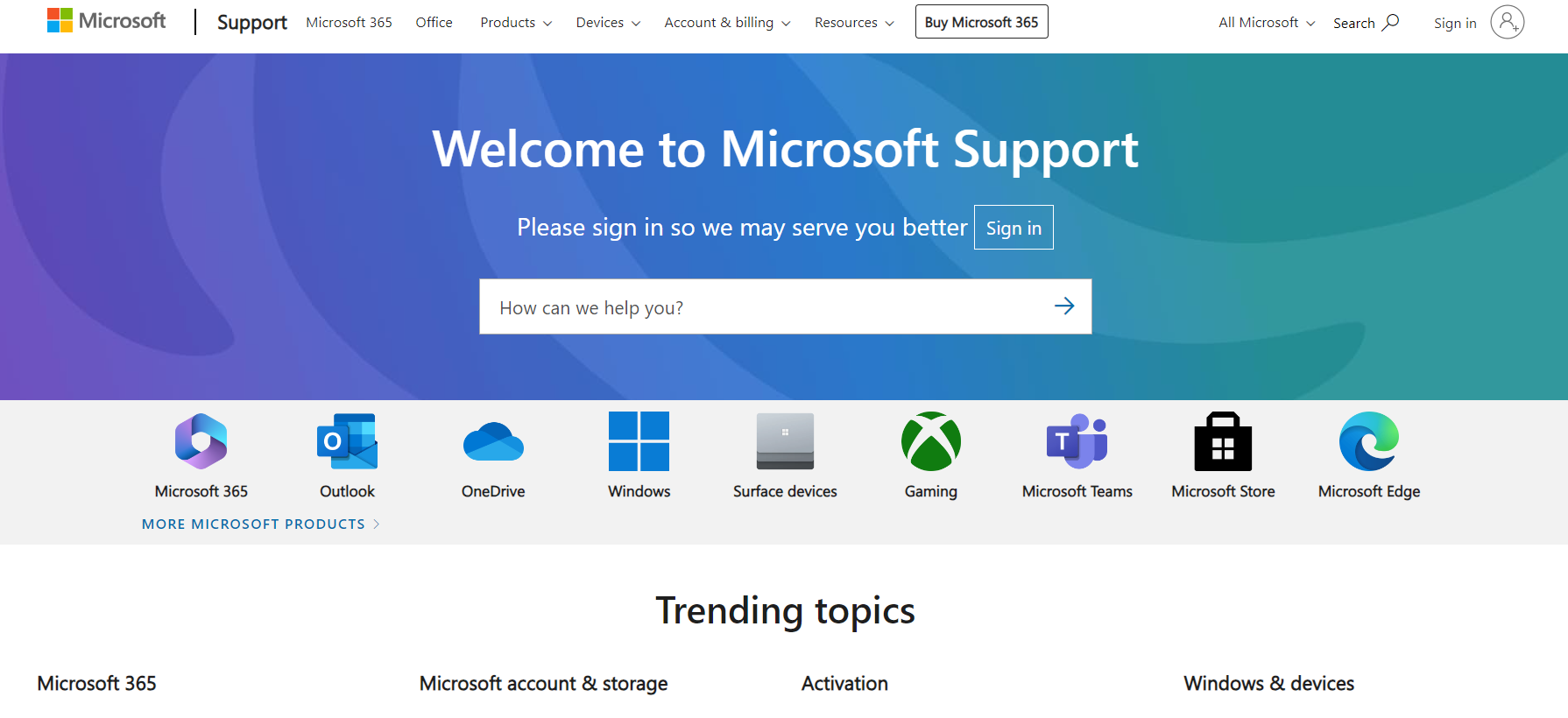
Microsoft provides extensive user documentation through Microsoft Docs to support its diverse offerings. Upon visiting Microsoft Docs, you are greeted with a search bar on the homepage with suggestions for articles, training, and code samples.
Recognizing the diverse needs of its user base, Microsoft organizes its documentation by product filters. This can be helpful, especially if you know what you want. Once you navigate to a specific category, Microsoft displays solutions, scenarios, and resources to guide you.
All articles in the category are displayed on the left-hand side for easy reference. On the right-hand side, a table of contents lets users see all article sections and jump to the relevant section.
6. Canva

The graphic design platform’s interface is straightforward, with a prominent search bar in the top center for effortless navigation. Canva’s homepage provides a simple overview of the knowledge base content.
The quick start section is well-structured, with images assisting instructions for better understanding. Canva also enables support by providing a link to create a support ticket at the top of the page.
You can easily navigate to other content in the user documentation at the end of each page. Visitors and customers can also get the option to rate the page’s helpfulness, providing valuable feedback for Canva’s team.
7. Skype

The video and voice call expert stands out for its clean and simple design, allowing easy navigation. Skype’s documentation has quick links for managing your Skype account, FAQs, troubleshooting tips, and information for new user onboarding.
All this information is conveniently located on a single central platform, making it easy to find the needed information. Its ability to sort articles for different products like Skype for Web, Android, and many more sets it apart. This feature ensures you find relevant information tailored to your specific product use.
Skype’s highly interactive user documentation encourages you to share ideas and give suggestions to help improve the support experience. This downloadable user guide includes detailed instructions, technical guides, and quick-start guides to get the most out of Skype.
8. Slack

Slack’s help center is easy to navigate due to its stand-out search bar and suggested, frequently searched articles.
Besides the search bar, Slack’s help center also features six sections that provide various information about its offerings.
These sections include everything from starting with Slack to enhancing feature knowledge and accessing tips and tricks to make the most of the platform.
9. LEAP
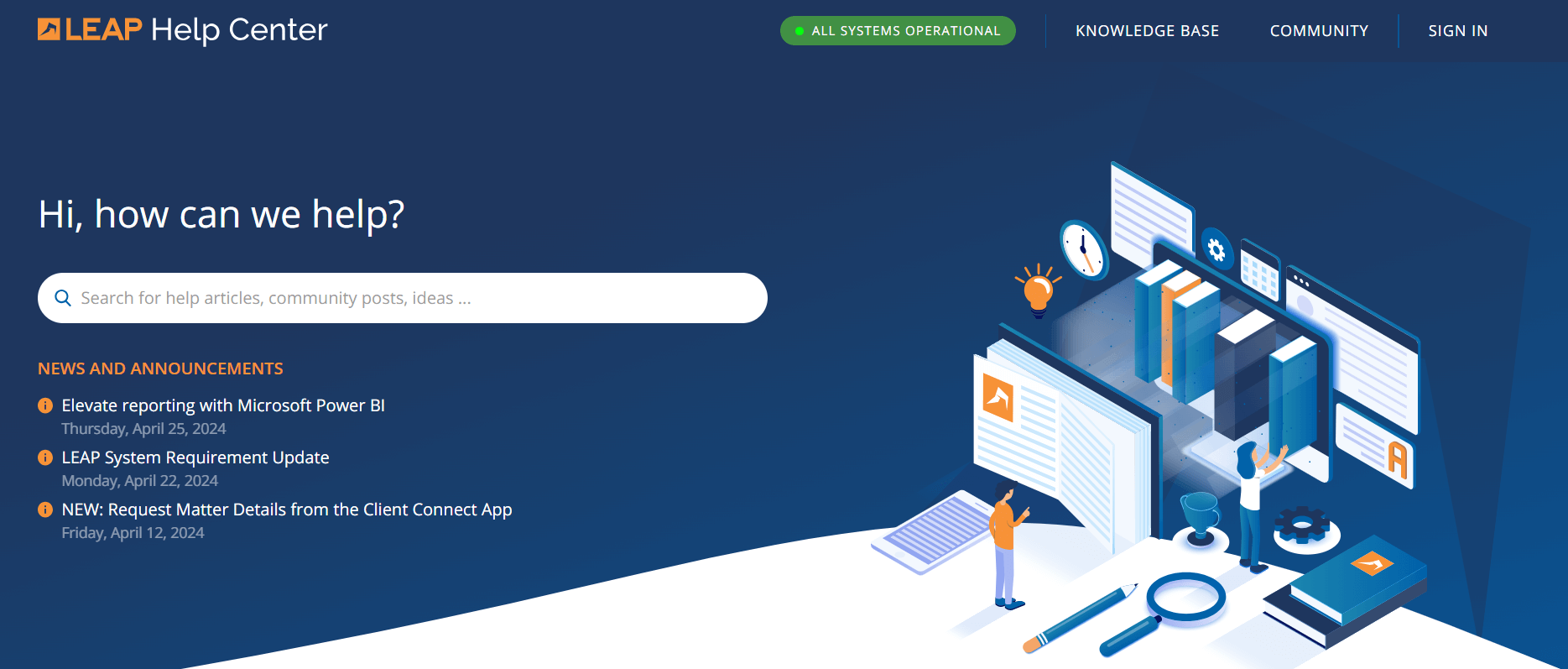
LEAP’s legal software tools help small law firms with case management, billing, and document automation. The company’s user documentation is welcoming and easy to navigate, with a distinguished search bar at the center of the page and suggested, frequently searched articles located right below it.
The home page of its user documentation is well structured, featuring six different and essential sections. These sections cover its offerings and let you access a variety of tips and tricks to get the most out of it.
Its consistent color scheme of blue and white is used across all pages. Most of its how-to content is presented in bullet points, making the articles clear and comprehensible.
10. YouTube

YouTube’s user documentation shows how to provide a seamless self-service experience through clean design and rich information.
The documentation is simple yet detailed, with broad categories on the home page, each containing five to six subsections. Clicking on any section directs you to the respective article page, which offers complete information on the topic.
Its documentation feedback option sets it apart. You can provide suggestions regarding the help center or specific help content. This helps YouTube improve its support experience based on user feedback continuously.
11. Mimosa
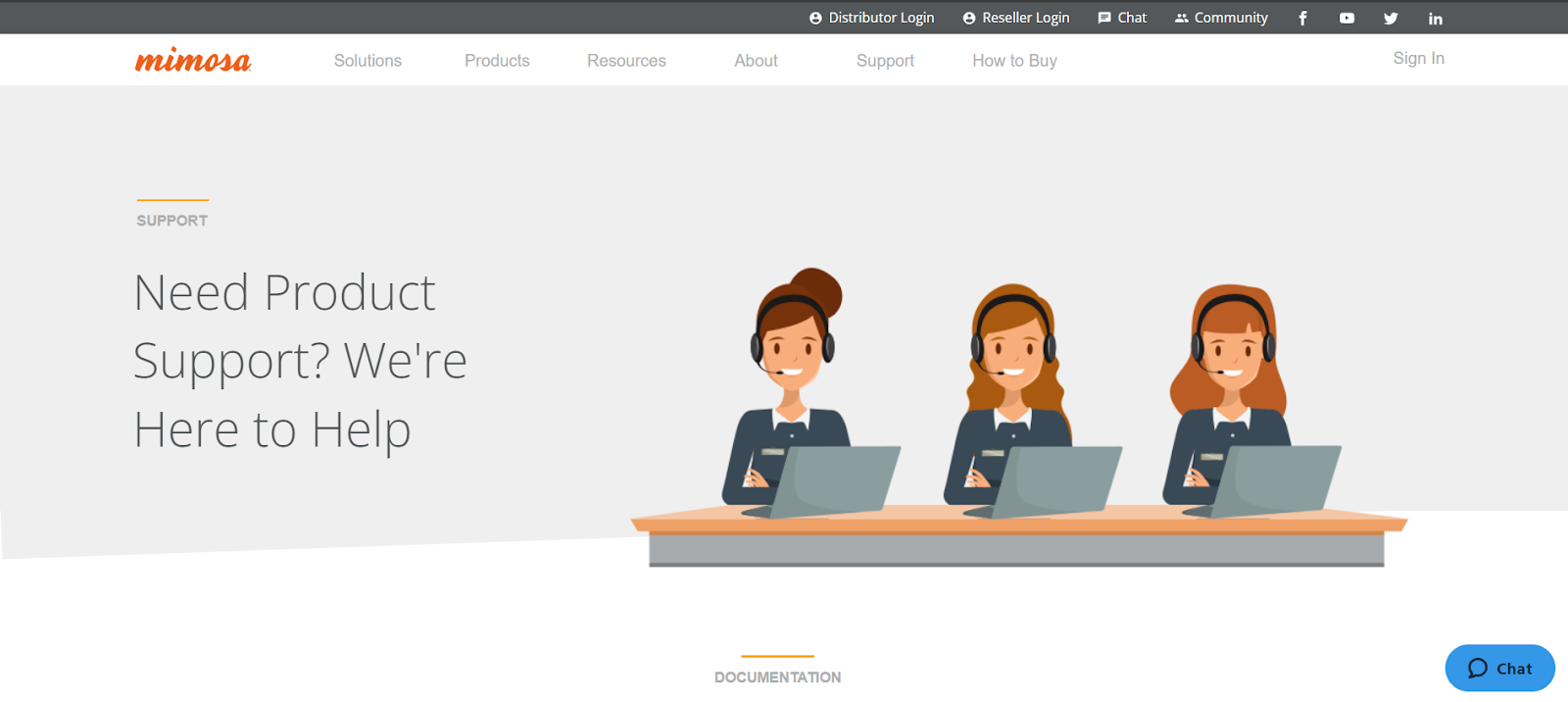
Airspan’s Mimosa Networks is a market leader in wireless broadband solutions. It enables service providers across the globe to make the Internet more accessible to urban and rural households alike.
Mimosa Networks provides comprehensive user documentation to help you understand and effectively use its offerings. The first thing you’ll notice is the notable search bar located at the center of the page.
Mimosa’s all-in-one documentation has everything under one roof – FAQs, troubleshooting guides, installation guides, and product specifications.
12. SurveyMonkey
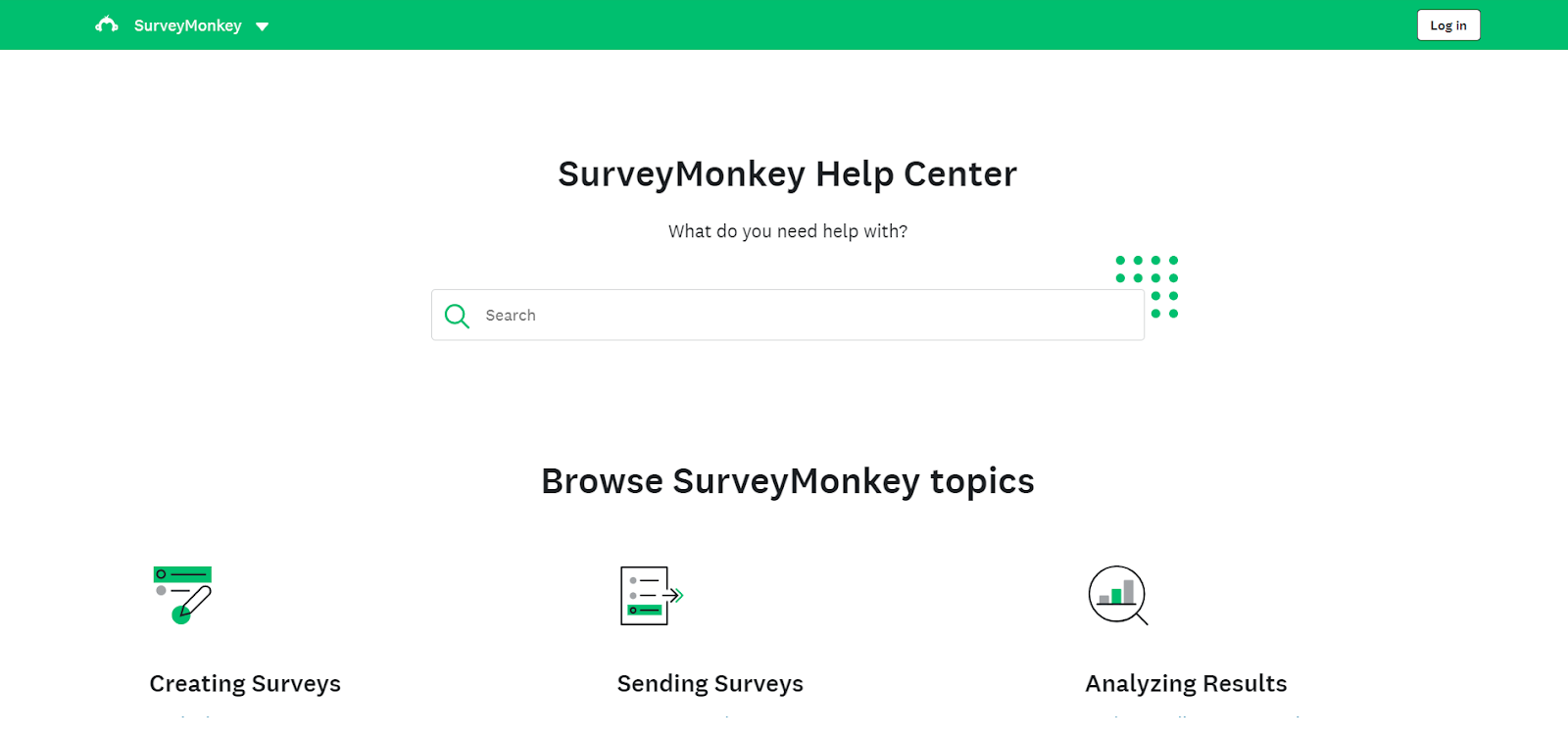
SurveyMonkey’s Help Center provides a clean interface with comprehensive resources. It has six main categories under the search bar and a brief guide for new users. It also provides quick links to the latest resources and most viewed articles.
It shines at clear organization of topics, making it convenient for you to find relevant information. Each piece presents detailed information about the subject, assisted by a screen-recorded video and textual content.
SurveyMoney’s dual format caters to visual learners and those who prefer text. Moreover, all content is easily skimmable, allowing busy users to find solutions to their queries quickly.
Create Error-Free Documentation to Promote 24/7 Self-Service
User documentation guides users through the complexities of a product and improves their overall experience by empowering them with the knowledge to use the product effectively.
From detailed user manuals to quick-start guides and interactive online help centers, various user documentation types serve a broad spectrum of needs and learning styles.
A user documentation software tool like ProProfs Knowledge Base can be a great starting point. It has an easy-to-use interface with an AI-enabled text editor to make it easy for you to create and manage user documentation.
It supports importing and exporting various file formats – you can import Word documents, Excel sheets, presentations, and more into their knowledge base. You can also export the content into a zip file and re-import it to the knowledge base if needed.
FREE. All Features. FOREVER!
Try our Forever FREE account with all premium features!







